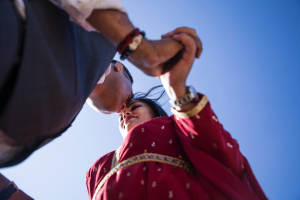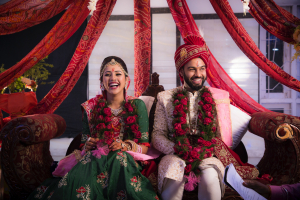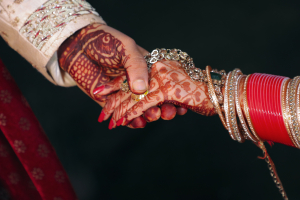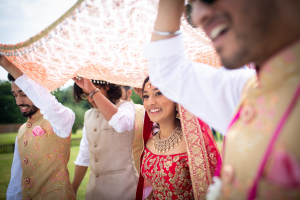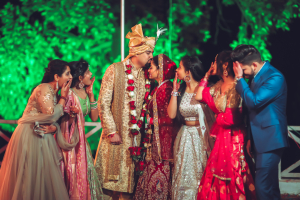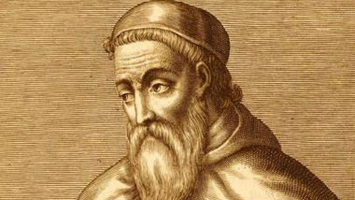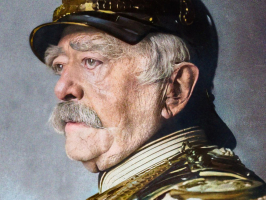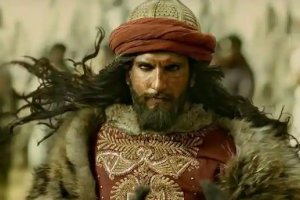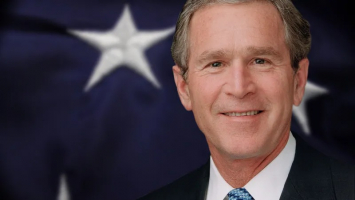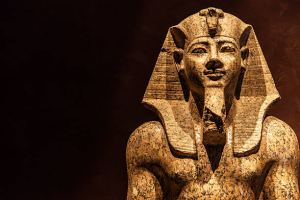Top 9 Interesting Facts about Christian Wedding
Christian weddings smoothly blend joy, tradition, and religion. The significant and the pleasurable are woven together in treasured rituals. This article ... read more...reveals fascinating information that sheds light on the attractiveness of Christian weddings and provides fascinating insights into the ceremonies of Christian weddings.
-
At the heart of Christian ceremonies, where love and faith converge, lies the profound and cherished tradition of the exchange of wedding vows. As the couple stands before the altar, surrounded by the embrace of their families, friends, and their shared faith community, the exchange of vows becomes a luminous focal point, radiating with the promise of a shared future.
The couple's voices blend together within the revered walls of the sanctuary, creating an embroidery of commitments, hopes, and goals. These vows, meticulously chosen and often shaped by deep introspection, become the cornerstones of their union. With words both spoken and unspoken, they pledge to honor, cherish, and stand by one another through life's seasons of joy and trials.
The exchange of vows carries within it the weight of tradition, the anticipation of a life yet to be lived, and the power to transform two individuals into a united partnership. It serves as a bridge between the past, present, and future—a bridge that spans generations, cultures, and time. And as they speak their vows, a profound energy ripples through the hearts of all present, for in those words, a new chapter is written, a new journey is undertaken, and two souls embark on a path of shared purpose, grace, and unwavering love.

Photo by Bin Thiều on Unsplash Video by American Marriage Ministries -
In Christian weddings, the groom entering the church first signifies that he is the covenant initiator. This deeply ingrained practice draws from centuries of Christian beliefs and practices. As the groom takes those initial steps into the church, he assumes a role that extends far beyond mere ceremonial protocol; he embraces the mantle of a spiritual leader, a protector, and a guide, mirroring the selfless love and devotion demonstrated by Christ for His Church.
The groom's entrance embodies a profound theological connection to the biblical narrative, wherein Christ is often referred to as the Bridegroom and the Church as His Bride. As the groom enters ahead of the bride, he enacts a visual representation of Christ's leadership, reflecting the Church's submission to His wisdom and authority. This symbolism underscores the groom's commitment to provide spiritual guidance, emotional support, and unwavering love, akin to Christ's role in the lives of believers.
Moreover, the groom's initiative in entering first amplifies the gravity of his commitment, signifying his resolve to uphold the vows of matrimony and to honor the covenant he is about to enter. This tradition is a powerful reminder that Christian marriage goes beyond a simple legal agreement. Instead, it embodies a sacred promise, joining two people in a bond that reflects the love, sacrifice, and unwavering devotion seen in the relationship between Christ and His Church.

Photo by Nathan Walker on Unsplash 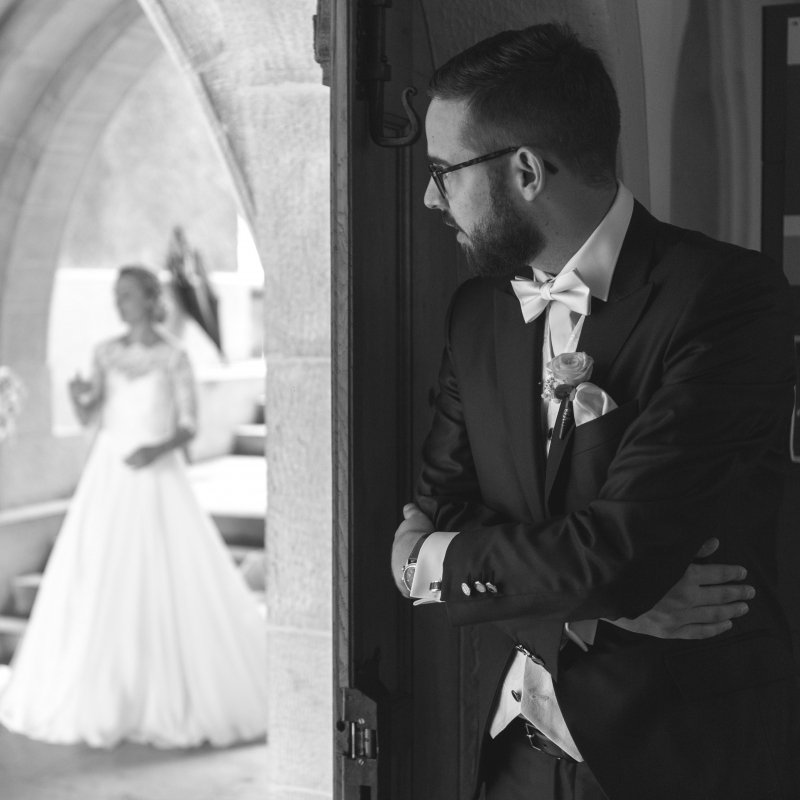
Photo by Timothée Pons on Unsplash -
In select Christian ceremonies, a poignant and visually striking tradition known as the unity candle ritual serves as a powerful symbol of the merging of two families into a harmonious and indivisible whole. The ritual often involves three candles: two taper candles, each representing the individual lives, stories, and families of the bride and groom, and a larger central candle, symbolizing the newly formed union.
As the ceremony unfolds, the bride and groom, often accompanied by their respective parents, approach the taper candles. With a shared flame, the couple jointly lights the central unity candle, signifying the beginning of their journey together. The symbolism radiates beyond the flames themselves, mirroring the interconnectedness of their lives, the families they were born into, and the family they are nurturing and creating anew.
This ritual encapsulates the Christian values of love, harmony, and the interdependence that marriage fosters. Just as the flames of the taper candles combine to kindle the larger unity candle, the two families join in their support, love, and blessings to nurture the flame of the new partnership. It is a visual representation of the biblical concept that "two shall become one flesh," reflecting the transformative power of love to bridge divides and forge unbreakable bonds.
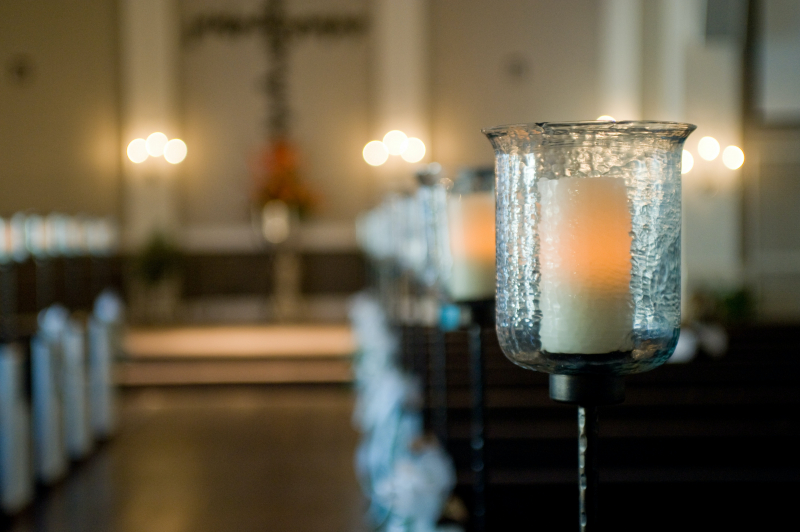
Photo by Jamie Coupaud on Unsplash 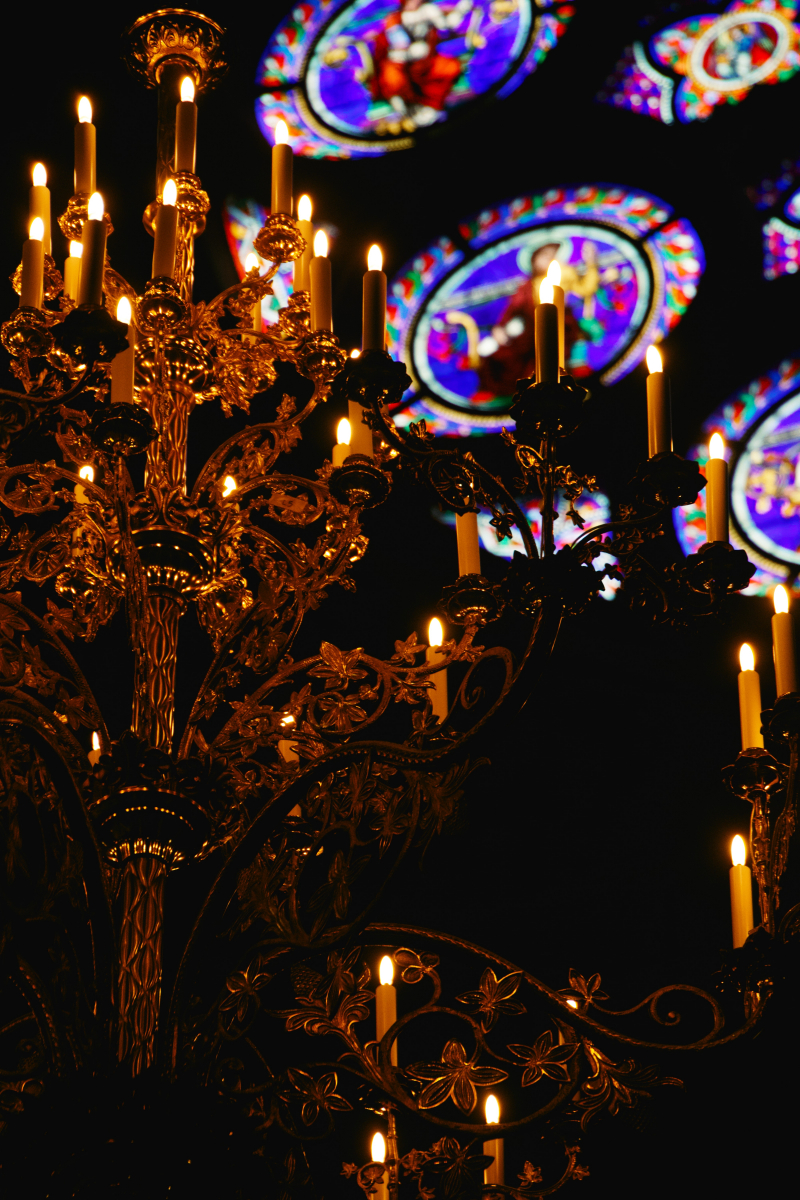
Photo by Miguel Alcântara on Unsplash -
In Christian wedding ceremonies, the resonant words of the Lord's Prayer, also tenderly referred to as the "Our Father," occasionally find their place as a luminous thread. Its verses, resonating with the teachings of Christ, reflect a communal plea for blessings, guidance, and unity. As the couple stands before their Creator, the recitation of the Lord's Prayer is a moment of both reverence and intimacy, inviting God's presence to sanctify their commitment and to envelop their marriage in a mantle of grace.
The Lord's Prayer, uttered in unison, bridges the earthly and the divine, inviting a harmonious connection between the couple's vows and the eternal truths encapsulated in this sacred text. Each word resonates with the aspirations of a shared life, a life lived in service to one another, as well as a higher purpose that transcends the mundane.
The recitation evokes a sense of humility and gratitude, grounding the couple's journey in the spirit of faith while offering a collective affirmation from their community that their love story is interwoven with the eternal narrative of divine love. In the midst of joyous celebrations, the Lord's Prayer provides a moment of tranquility, where hearts and voices unite in a timeless rhythm, etching the sanctity of marriage into the very fabric of faith and devotion.
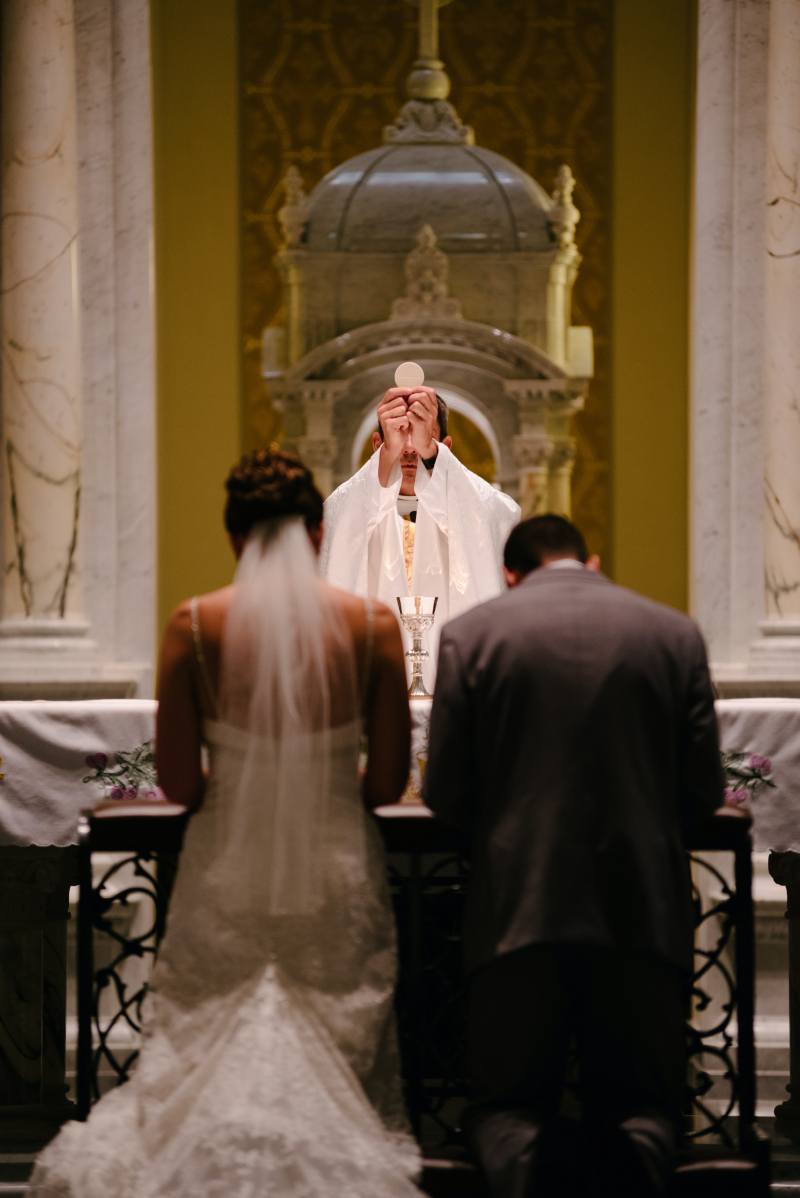
Photo by Josh Applegate on Unsplash 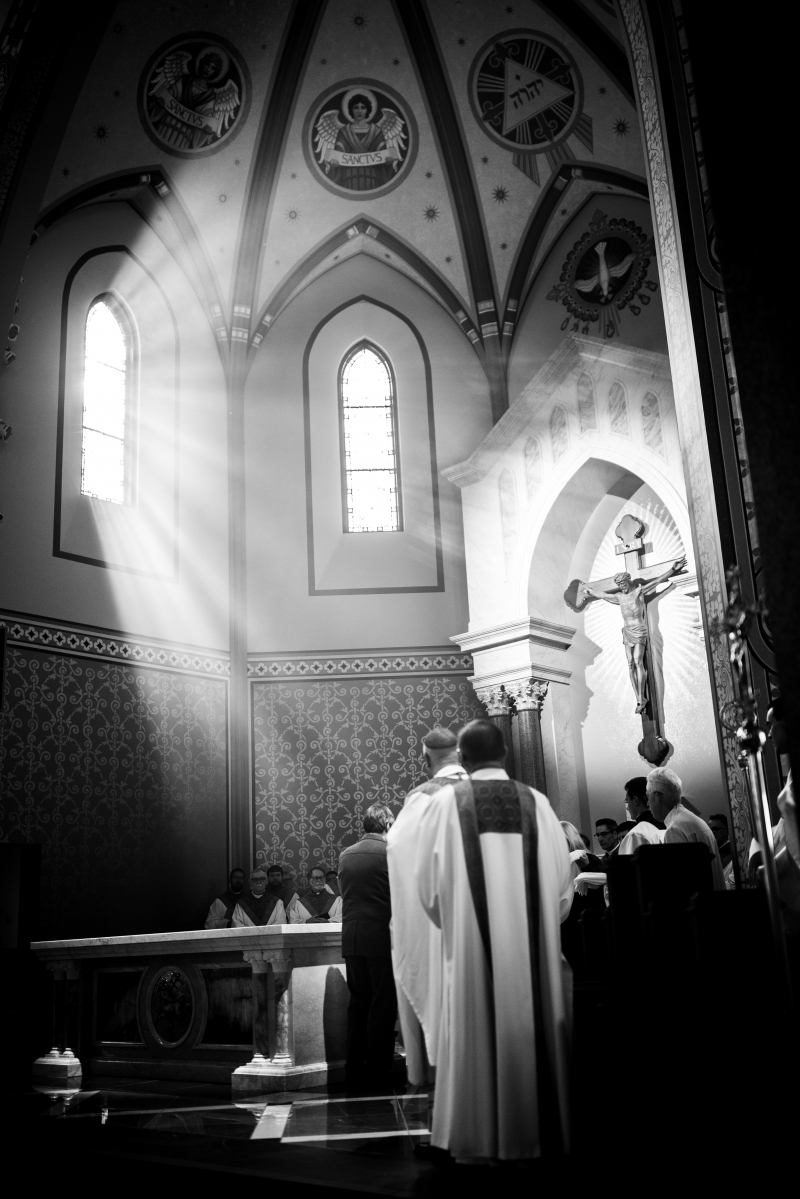
Photo by Jacob Bentzinger on Unsplash -
The kiss, a universally understood expression of affection and intimacy, carries an additional layer of significance in the context of the Christian ceremony. It is not merely a display of personal affection, but a representation of the spiritual bond that has been consecrated through their vows. This kiss becomes the bridge between the earthly and the divine, signifying the sacred intertwining of their lives and souls as they embark on a journey of shared dreams and challenges.
Furthermore, the kiss is a symbolic declaration of the joy and celebration that accompanies this sacred union. It represents the delight of being united with a kindred spirit, and the anticipation of the adventures yet to come. This single moment, witnessed by their loved ones and overseen by the Divine, captures the essence of their journey: the courage to stand as individuals and the humility to merge as partners.
In this embrace, under the watchful gaze of God, family, and friends, the couple's love is affirmed and sanctified. The kiss at the end of the Christian ceremony is not just a physical act, but a bridge between the seen and the unseen, a representation of the eternal love that envelops and guides their union.
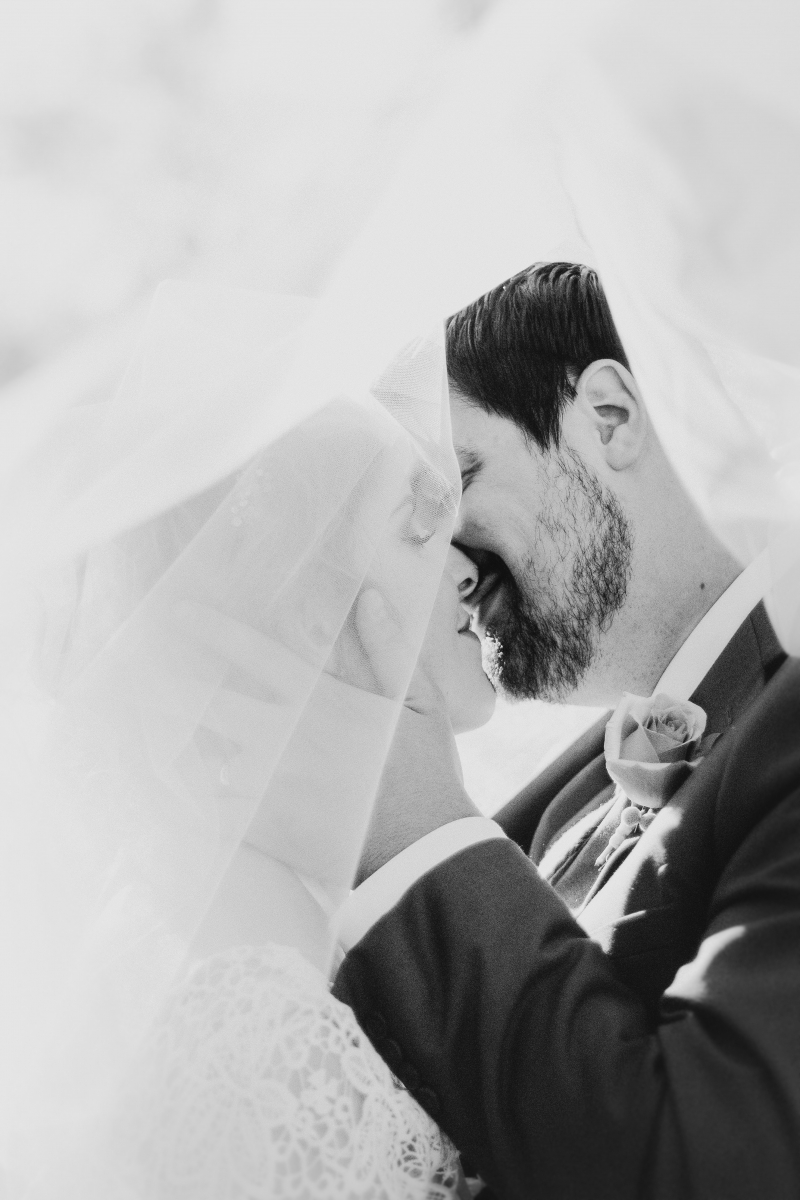
Photo by Cameron Stow on Unsplash 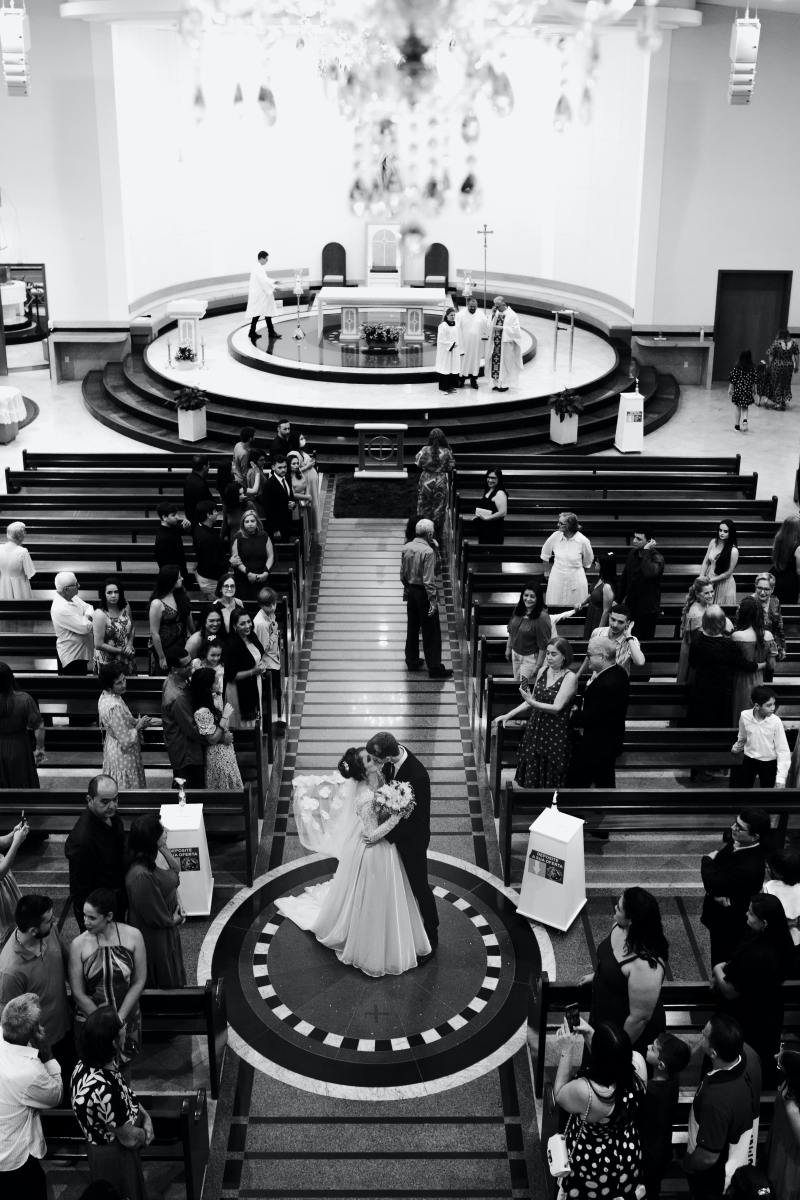
Photo by Jonathan Borba on Unsplash -
In Christian weddings, a heartwarming and time-honored ritual unfolds in the form of a toast. This cherished tradition commences with the harmonious clinking of glasses, a harmonious symphony that signals the commencement of a communal expression of love and well-wishes. As the glasses are raised, a palpable sense of unity envelopes the gathering, a harmonious chorus of hopes and aspirations resonating through the air.
The gesture of raising a glass, charged with the shared wishes of those gathered, embodies the love and support surrounding the couple in a powerful way. It is a profound acknowledgment that marriage is not just a union of two individuals but a merging of families, friendships, and futures. The toast is a recognition that the couple's happiness is not solitary but intertwined with the happiness of those who have joined them to witness and celebrate their union.
This tradition goes beyond a simple gesture; it's a bridge connecting the celebration to the deep feelings of faith, love, and hope that will journey with the couple through life. In this way, the toast at a Christian wedding symbolizes the heart of the occasion—an event that brings together generations, aspirations, and love in a beautiful harmony of blessings.

Photo by Joshua Chun on Unsplash 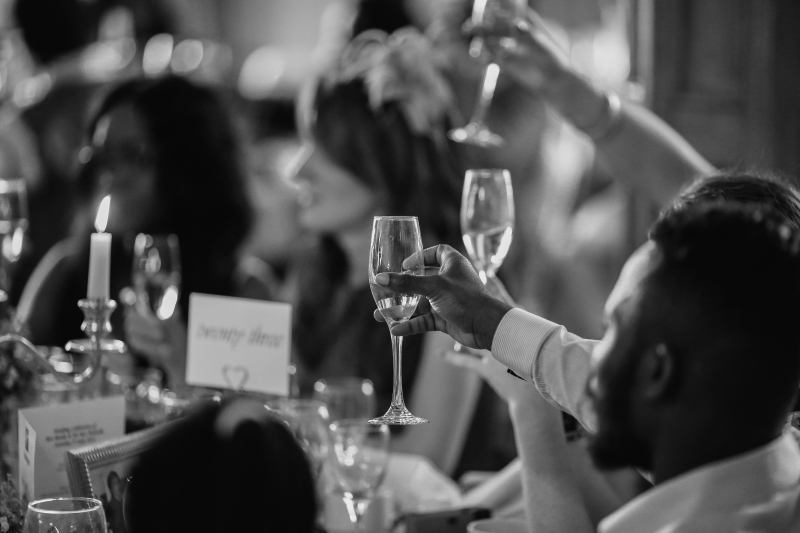
Photo by Thomas William on Unsplash -
This sacred pause allows a space for introspection and remembrance. Often marked by the lighting of a candle or the display of a cherished memento, this gesture symbolizes the luminous imprint that departed loved ones have left on the lives of those gathered. The candle's flame flickers as a beacon of the enduring love and cherished memories that continue to guide and illuminate the couple's path forward.
This tradition stands as a universal recognition of the role that those who have passed play in shaping our lives. Beyond its emotional resonance, this pause to remember carries a deep sense of interconnectedness. It highlights that the couple's journey is woven from the past, present, and future, shaped by more than just their own story.
As the moment ends, the couple steps forward with a new outlook, strengthened by the legacy of their ancestors. The memory of departed loved ones remains, reassuring them that although not present physically, their spirits are still part of the celebration's essence. This moment of silence beautifully encapsulates the essence of Christian weddings—a celebration of love, unity, and faith, enriched by the acknowledgment that our journey is knitted with the spirits of those who forever reside in our hearts.
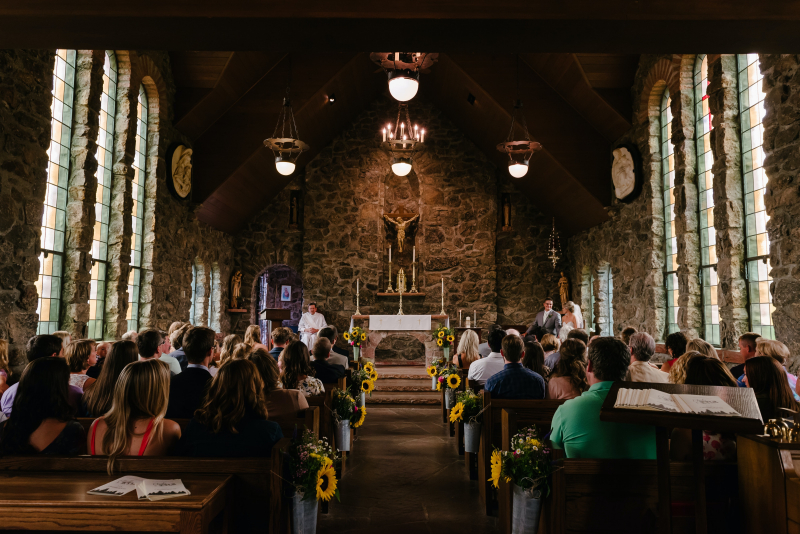
Photo by Josh Applegate on Unsplash 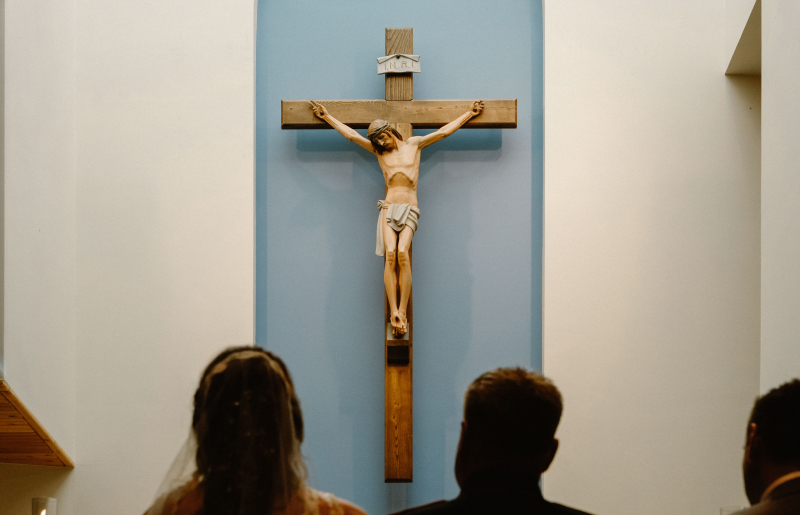
Photo by Josh Applegate on Unsplash -
The pronouncement is a significant moment in a wedding ceremony where the minister officially declares the couple married in the eyes of the church. This announcement signifies the height of the couple's journey, the point where their individual histories merge into a shared future. Through these words, the minister connects the couple's love story to the sacred bond of marriage, intertwining elements of faith, tradition, and community into their union.
In this sacred moment, the pronouncement evokes the Scriptural adage that "what God has joined together, let no one separate." It symbolizes the joining of two paths, two stories, and two families into a single narrative of love and commitment. It is a bridge that draws strength from the vows exchanged, the rings interchanged, and the faith that envelops them both.
The pronouncement serves as an invitation for all present to bear witness to this transformational event. It reaffirms that marriage is not just a personal contract but a sacred covenant that extends beyond the couple, resonating in the hearts of those who stand witness. The couple's smiles, the tears in their eyes, and the collective embrace of their loved ones become part of this moment—a moment that encapsulates the beauty of shared love, shared faith, and shared celebration.
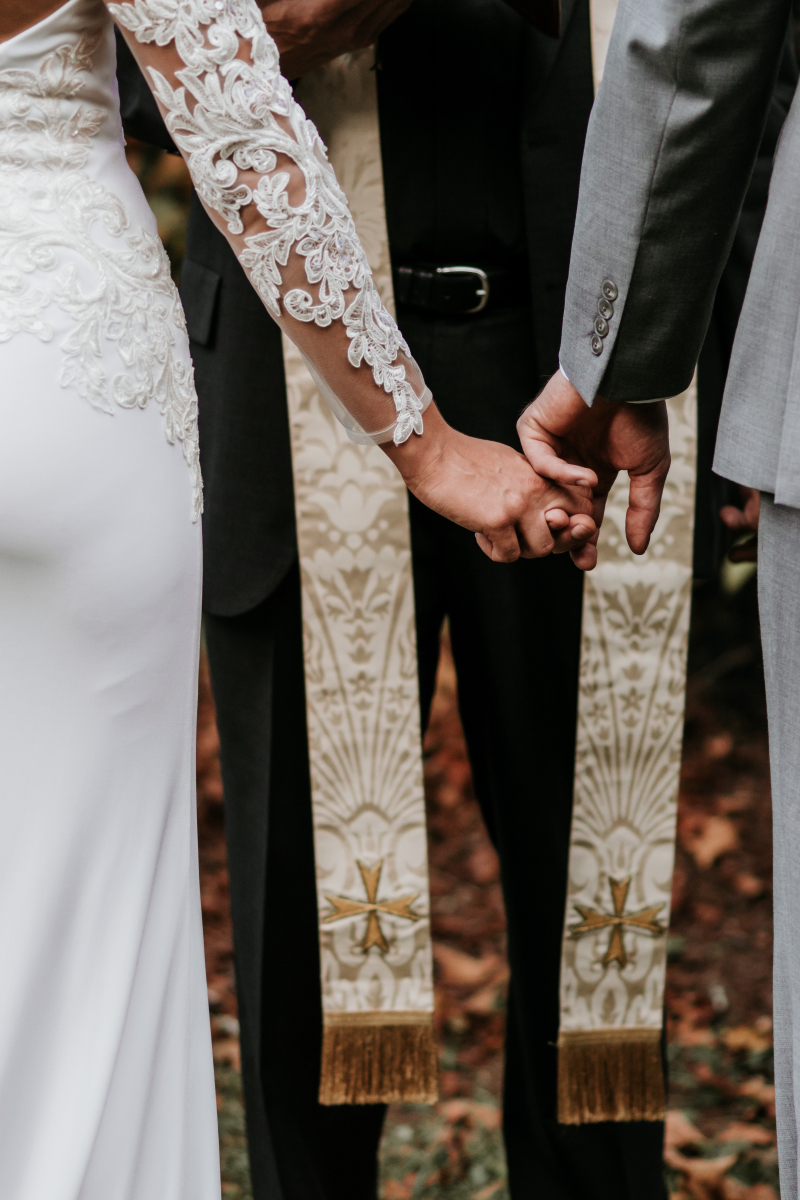
Photo by zelle duda on Unsplash Video by Lem LeRoy - Wedding Services -
As the music rises and the dance peaks, the first dance is more than a ritual—it becomes a moment of transcendence.Amid the ambiance of a Christian wedding, the first dance emerges as a breathtaking moment that beautifully encapsulates the essence of the newlyweds' love story. As their hands entwine and they move in harmony, the first dance becomes a tangible expression of their devotion and the joy that radiates from their hearts.
Surrounded by the loving gaze of family and friends, the couple's first dance is an invitation for all to witness their love story unfold in this magical moment. Their steps, graceful and deliberate, mirror the steps they've taken on their journey towards one another. Every twirl, every dip, and every embrace speaks volumes, telling a story of unity, growth, and shared dreams. In this dance, they not only celebrate their union but also honor the love that has brought them to this point.
As the music rises and the dance peaks, the first dance is more than a ritual—it becomes a moment of transcendence. It's a sharing of their love with their guests, an invitation for others to join them in celebrating this new chapter.
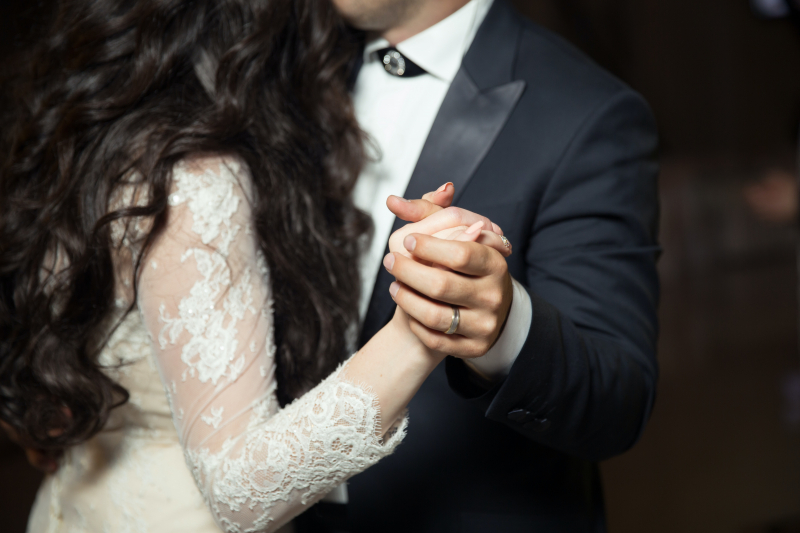
Photo by Alvin Mahmudov on Unsplash 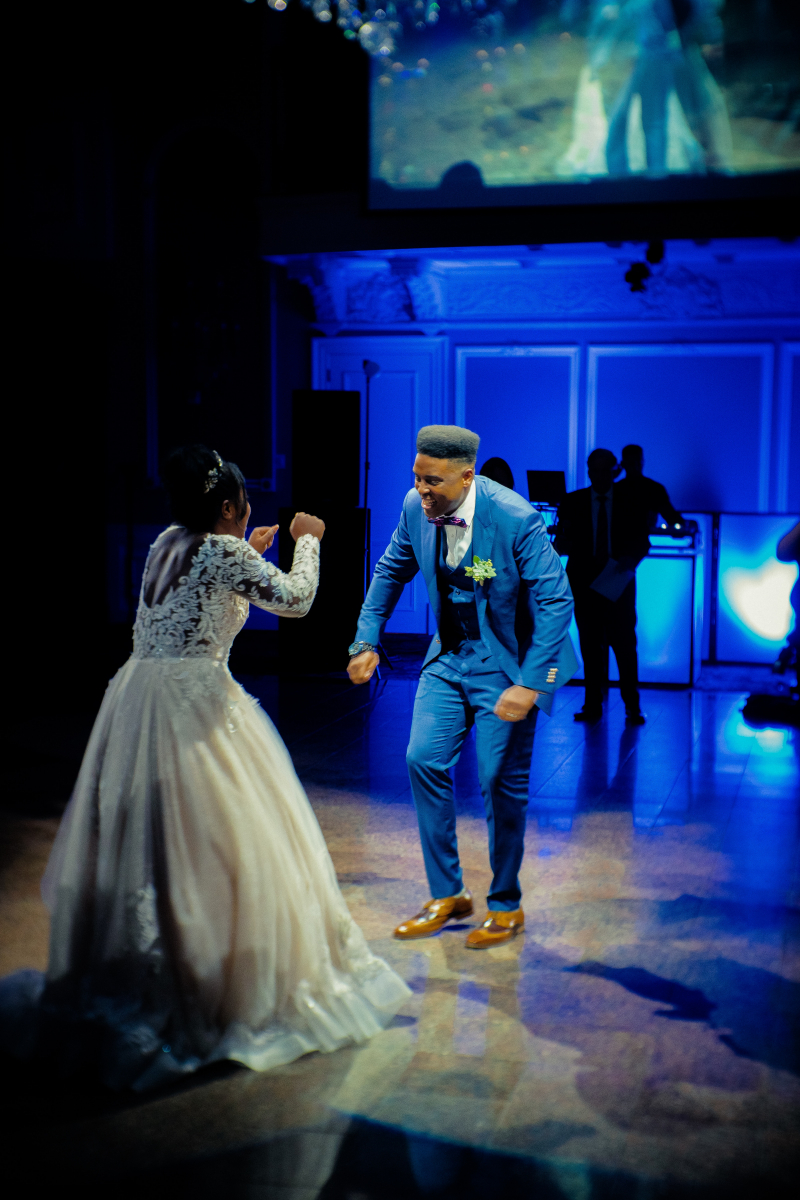
Photo by Bernie Almanzar on Unsplash












